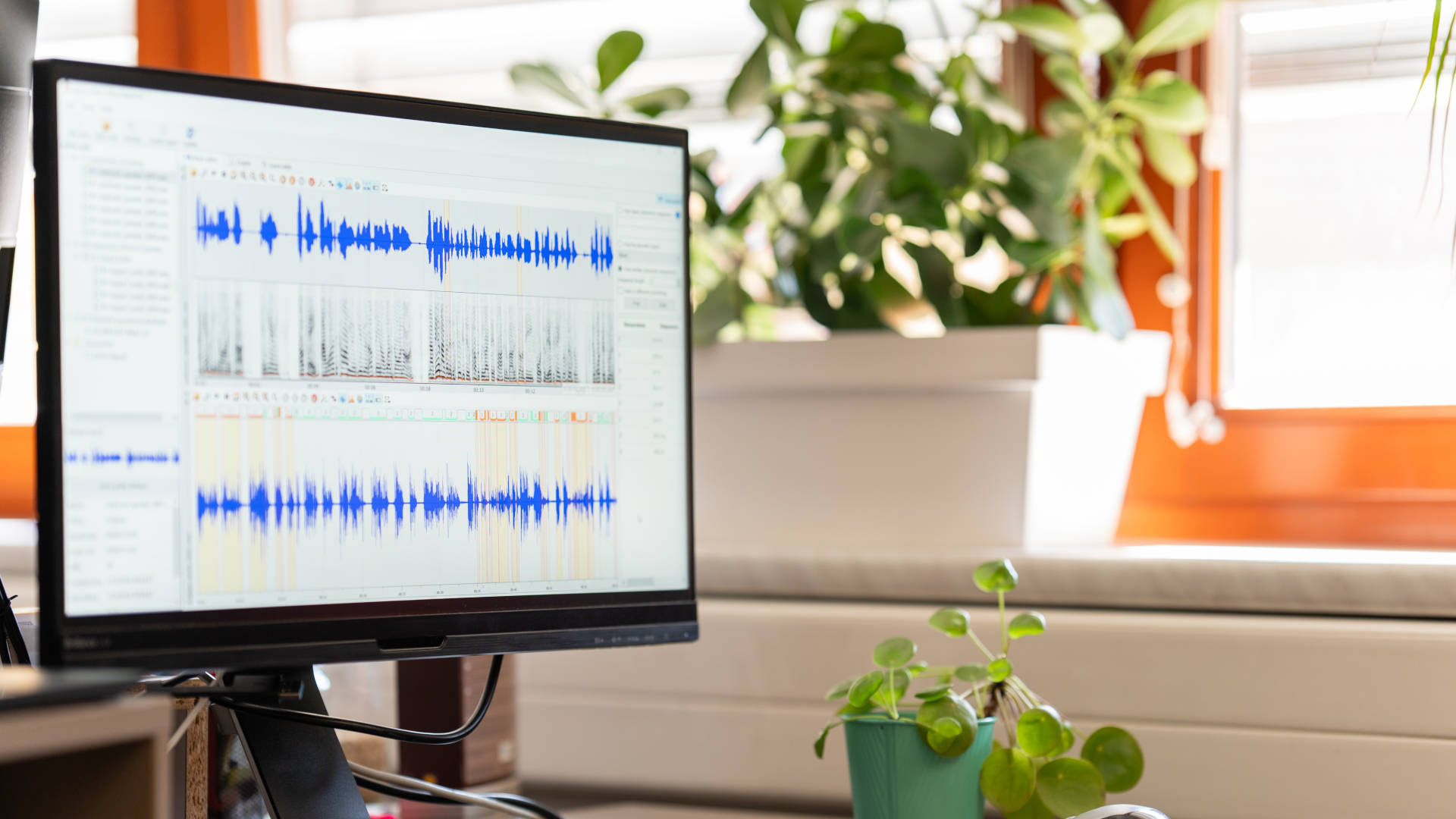8 Benefits of Using Passive Voice Biometrics in Contact Centers

August 25, 2021
By Pavel Jiřík in Blog
Biometrics consists of the analysis of patterns in human behavior, particular traits, and characteristics to identify the person associated with them, whether physical or behavioral. Historically, the most popular form of biometrics was fingerprint identification. Now, biometrics is a rapidly developing technology and its almost unlimited applications are becoming available to the broader public every day, especially with the growing popularity and availability of smartphones.
There are two different types of biometrics:
- Static Biometrics - focused on the analysis of the distinctive and unique physical characteristics of each individual.
- Dynamic Biometrics - identifies the behavior of an individual who has a differential character and whose distinction is unequivocal.
Static biometrics is currently the most developed type and has many variants. Here’s a list of the main types of biometrics that can serve as personal authentication methods.
- Fingerprints - one of the most widespread and widely used types of biometric authentication because of its reliability and ease of use.
- Iris Scanner - each iris has a pigmented membrane that can be digitized for subsequent recognition under any lighting conditions.
- Retinal Scan - although highly reliable, by way of using infrared light to analyze the distinctive areas of each individual’s retina, it’s not very easy to use.
- Facial Pattern Analysis - currently, there are 2D and 3D facial recognition technologies available, the latter of which are the most effective because it is not possible to falsify them by using a 2D object such as a photograph.
- Palm Geometry - the lines that appear on the palm of the hand are also specific to each individual, but this system is not commonly used because it is similar to fingerprints but slower and less reliable.
- Voice Biometrics - a technology that makes it possible to determine and authenticate an individual's identity through the recognition of voice characteristics and patterns, which is possible because each human being's vocal apparatus is unique.
In this article, we want to focus on voice biometrics, and in particular on passive voice biometrics, and its benefits for contact centers.
Voice biometric technology enables measuring the unique features of the vocal apparatus and creating a profile of each user with high accuracy from hundreds of physical parameters of their voice.
In other words, when generating each person's unique voiceprint, phonetic and physiological parameters such as the oral, and nasal cavity are taken into account. Because of the fact that so many unique features are used in the passive voice biometrics authentication process, this technology is exceptionally hard to falsify.
How Does Voice Biometrics Work?
Each person has unique physical characteristics of their phonatory apparatus: nostrils, mouth cavity, trachea, etc. Together with an individual’s tone and pronunciation, all of these characteristics contribute to the uniqueness of each person's voice to make it unique and exclusive.
To use any voice biometrics system in a contact center, the first thing to do is obtain the voiceprint - this process is called voice enrollment. How is this achieved? By one of two ways:
- Passive Voice Biometrics - while a person is speaking, their voiceprint is obtained non-invasively.
- Active Voice Biometrics - a person is recorded while repeating the given phrase.
After a voiceprint is obtained, it’s translated into a mathematical representation of the person’s voice and stored in that form in a database.
Passive voice biometrics is a more secure and more user-friendly solution than active voice biometrics. As already mentioned, voice enrollment happens as a person speaks naturally, and so does each security check. A person calling a contact center doesn’t need to recite a passphrase each time they want to be connected with an agent. Instead, they just start a conversation and are identified within seconds. This directly translates into increased user satisfaction.
What’s more, with passive voice biometrics, identification can happen in the background during a whole conversation rather than just at the beginning of a call, adding an additional layer of security to the process naturally.
Learn more about the differences between active and passive voice biometrics.
Benefits of Using Passive Voice Biometrics in Contact Centers
1. Security
The main benefit of voice biometrics lies in the data protection it offers to the user. By identifying oneself through voice biometrics, any transaction made with a contact center is secure since this technology identifies the user thanks to the analysis and verification of their voice characteristics. Voice biometrics extracts the vocal parameters of the user's speech for identity verification by comparing it with a previously generated voiceprint. This voiceprint is a mathematical pattern that does not allow reconstruction of the user's voice, preventing fraudulent use of it. In addition, this technology is fully compliant with all the requirements of GDPR, which is an important EU regulation on the protection of user data.
2. Personalization
Receiving personalized and exclusive attention is another one of the benefits that voice biometrics offers users. Thanks to rapid verification of the speaker, contact center professionals have access to the customer's history in an agile way. That’s why conversations can have a closer and more personal tone, and the operator can offer a personalized service based on each customer's specific needs in a fast and secure way.
What’s more, thanks to voice biometrics, the technological devices surrounding us that use it can create unique profiles for each user and offer personalized user experiences and recommendations for each profile, etc.
3. Improved User Experience
Implementing and making use of the latest technological innovations always positively impacts a company's image. In order to differentiate a business and stand out from the competition, it’s necessary to adapt to new technological changes and make use of them to offer quality service. For example, passive voice biometrics makes the identification process faster, reducing waiting time in contact centers. Thanks to that, users can connect with contact center agents in seconds and get identified while speaking with them.
And since reducing waiting times is one of the top priorities of many contact centers, implementing passive voice biometrics is a perfect solution to that challenge. It’s also worth adding that voice biometrics is a technology that provides security and confidence to the user for them to access services in an easy, simple, and non-intrusive way.
4. Fraud Detection
Many fraudsters take advantage of systems based on passwords and security questions to exploit their vulnerabilities over the phone, impersonating customers, and committing scams that can cost the victims millions of dollars. In this scenario, passive voice biometrics presents itself as a solution that can prevent cases of phishing fraud over the phone or vishing.
5. Cost Savings
The streamlining of processes and time savings through the use of passive voice biometrics translates into cost reductions. Savings can be achieved by minimizing the number of steps and the time required to carry out identification processes. Voice biometrics stands out especially in this respect as it does not require specific hardware and can operate with a standard microphone. What’s more, passive voice biometrics doesn’t require any specific engagement from contact center employees, as identification happens instantly during a call.
6. Dealing with Formalities Over the Phone
Passive voice biometric authentication allows you to, for example, sign a contract remotely and instantly. You don’t need to either go to an office or a bank to sign papers. Printing documents, signing, and scanning them is also not required. It is now possible to sign contracts or legal documents of any kind with your own voice without even leaving your apartment.
7. Ease of Use
Passive voice biometrics stands out as a technological solution that is very easy to use. All that is needed is to speak naturally to enable software to recognize the user's voice and start operating. No specific commands or passphrases are required. The fact that ease of use is one of its main benefits makes voice biometrics a highly accessible technology for everyone who can speak, since only speech is required and not in-depth knowledge or technical resources.
8. No Additional Devices Needed
Voice biometrics does not use additional hardware, which translates into direct cost reductions. For example, other biometric methods such as fingerprint authentication do require the installation of a reader to scan the human body. However, in the case of voice biometrics, all that is required is a microphone that is available as standard on virtually all mobile devices or computers today.
Wrap-Up
Today's society is more than used to doing business over the phone. However, this process is often tedious due to the amount of data that must be provided and involves security risks since anyone who has someone else’s personal information can impersonate their identity. Therefore, passive voice biometric speaker identification is the ideal solution, as it quickly confirms the user's identity almost unequivocally from just a few spoken words, making any service using it more secure, agile, and personalized.


